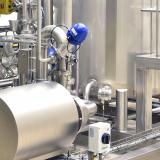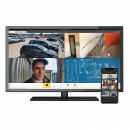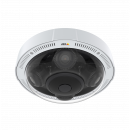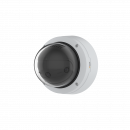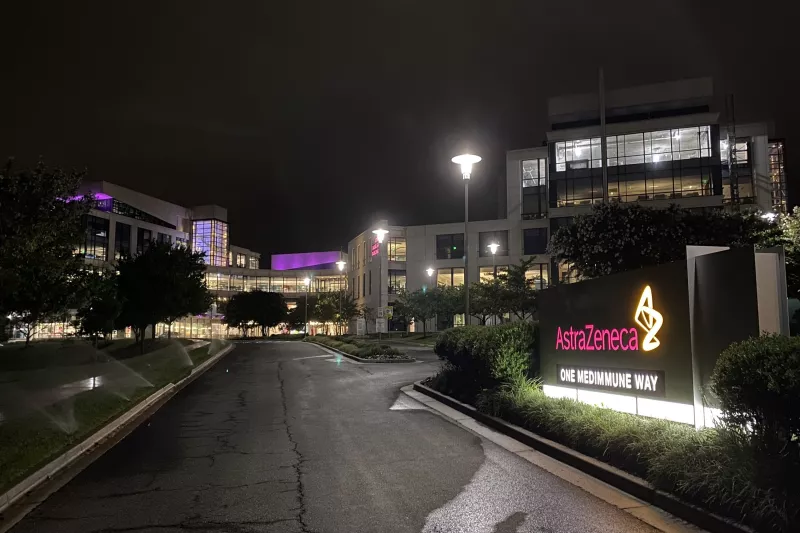
Smart Space Planning
AstraZeneca deploys AXIS Camera Station, Axis multisensor cameras and analytics to improve campus security and lab safety, monitor emergency evacuations, and efficiently assign office space and furnishings for its hybrid workforce.
Evolving with the times
As one of three global R&D hubs for AstraZeneca – a multinational biopharmaceutical company – the Gaithersburg, Maryland campus outside of Washington, DC prides itself on its ground-breaking development of life-changing medicines for millions of patients around the world. After years of service, it became apparent that the security camera system monitoring the site’s 10 buildings wasn’t keeping pace with the needs of Gaithersburg’s innovative work environment.
“Our existing security camera solution wasn’t evolving like other camera systems on the market and was holding us back from implementing new ways to support our 1.4 million square feet of office space, laboratories and manufacturing facilities more effectively,” says Brooks Cucuel, Senior Director of Security for AstraZeneca’s Gaithersburg facility.
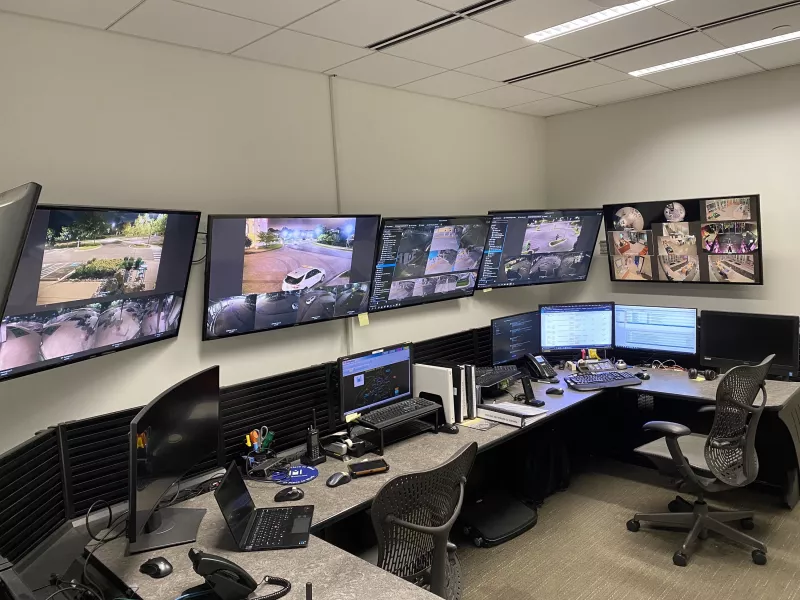
The decision to replace its video management system and mix of cameras with an Axis camera portfolio and AXIS Camera Station video management system introduced new features and capabilities that transformed the way the security department supports the Gaithersburg campus.
“The changeover has enabled us to be an integral partner in addressing issues like sustainability, emergency response, and space planning for our office space and laboratories, even our childcare center,” states Cucuel.
“In fact, the Axis technology is having a direct impact on how we operate on a daily basis and the decisions we make on how we’ll operate in the future.”
The intuitive nature of AXIS Camera Station has made the transition easy. “Not only do the operators in the Command Center find the interface easy to use, now we have access to a lot of functionality and analytics that we didn’t have before,” explains Cucuel.
Changing over to AXIS Camera Station and Axis cameras has truly transformed how we address space planning for our offices and laboratories; how our manufacturing team trains staff, troubleshoots processes and conducts quality assurance reviews; and how security oversees emergency evacuation drills.
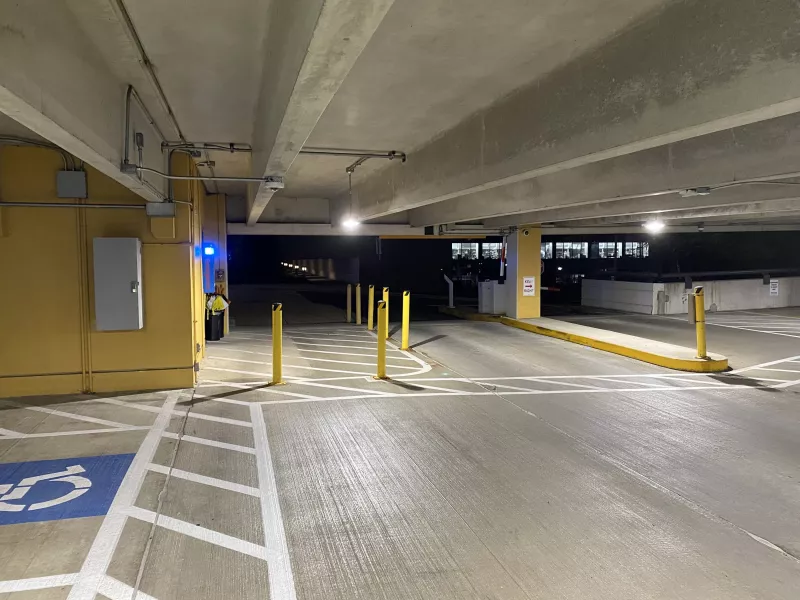
Managing garage safety and security
Especially during COVID, when so many employees were working from home, the virtually empty multi-story parking garage became a beacon for kids to hang out and a liability for AstraZeneca. To protect the structure from trespassers, AstraZeneca decided to deploy Axis multisensor cameras that combine panoramic views with high-speed pan/tilt/zoom (PTZ) capabilities.
“This set up lets us maintain a wide field of view at the same time we might be zooming in to see what an individual is doing,” says James Lee, Site Security and Emergency Response Manager for AstraZeneca. “By strategically situating the PTZ cameras, we’ve covered each level, the stairwells, and the entry gates.”
On the garage’s rooftop, Axis cameras give security a clear view of the adjacent surface lot as well as the roadway that circles the campus. Security also programmed motion detection triggers in AXIS Camera Station to alert the Command Center of activity in the garage area at night when fewer security staff are on patrol. “That’s played a huge part in initiating staff response to an event a lot earlier,” shares Lee. He adds that Axis intercoms were also installed to help facilitate direct communication between security staff in the garage and Command Center.
Configuring better hallway coverage
Gaithersburg has deployed over 500 Axis cameras throughout the campus: a mix of PTZs, fixed domes and multisensor panoramic cameras. One of the most popular models is the dual sensor AXIS P37 Panoramic Camera Series which has allowed security to monitor hallway intersections more efficiently.
“We use a ton of these cameras,” states Lee. “The cool thing about them is that you can adjust their angles to catch two hallways that converge on each other or monitor four-way hallway intersections.” The cameras are also being deployed in the middle of long corridors to monitor both ends from a single IP address, a significant savings over the multi-camera set up required with their previous camera system.
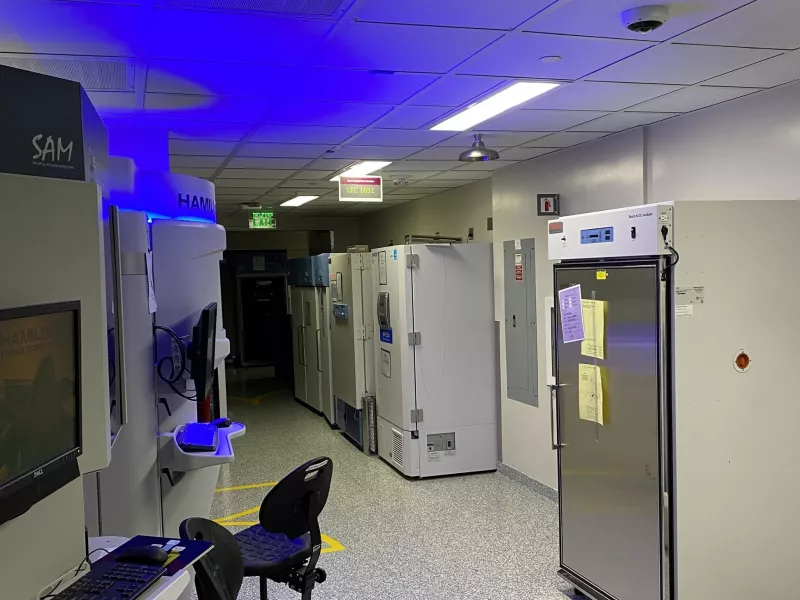
Monitoring activity in restricted access areas
Security works closely with the individual groups operating in restricted areas to install cameras that provide the best oversight of their operations. “We use AXIS P32 Dome cameras in these locations,” says Lee.
“These fixed dome cameras give us great resolution even when someone’s moving in the scene or stepping in and out of bright lights and shadows.”
Lee finds that AXIS Camera Station makes it easy to set up privileged access so that teams can only view the cameras that cover their area of responsibility. While security views the cameras with an eye towards general safety and security, other specialty teams might be monitoring for different operational concerns. For instance, the team in charge of the Pilot Facility, a small manufacturing suite, could be checking quality control processes. Another team might be monitoring lab corridors to see that airlocks to clean rooms are kept closed. An R&D team might be checking that quarantine protocols are being followed in the cell therapy lab, and so forth.
Using office space and equipment more efficiently
Because AstraZeneca still maintains a hybrid work model, one of their concerns at the Gaithersburg campus is how to maximize efficient use of office space and equipment in their buildings. “One of our biggest sustainability priorities in working with our remote/hybrid/in-office work model is to look at how our buildings are being used,” says Lee.
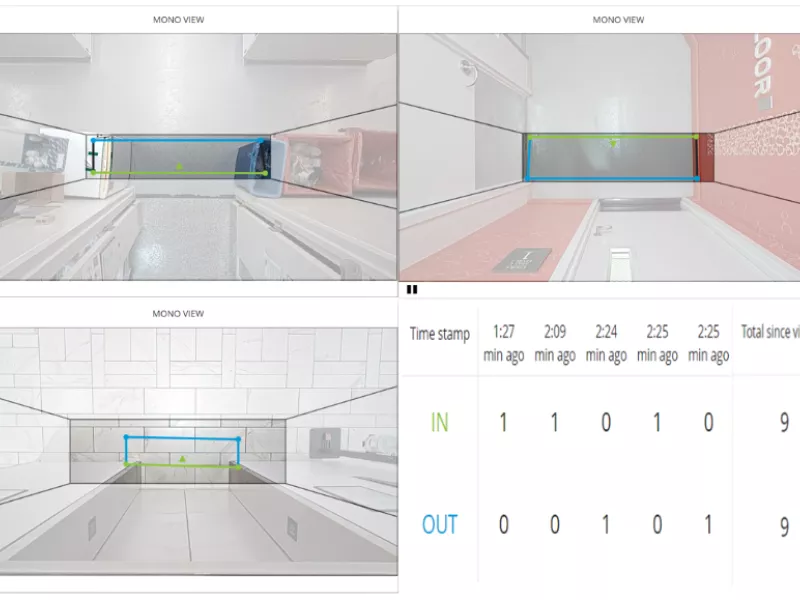
To understand how people were using their assigned space, Lee’s team set up a pilot program in one of the buildings on campus. They deployed AXIS 3D People Counter, equipped with analytics, at circular verticals (elevators/stairwells) and chokepoints on each floor of the building to determine how many people were occupying each area. “We compared that information against badge data, organizational level and location-based data to help us understand whether people are actually going to the areas they were assigned,” explains Lee.
“Given that there’s always a percentage of people working remotely, or on vacation, or utilizing alternative space, you really don’t need 100 percent of the seating allocated to however many employees there are in the given department,” explains Lee.
Lee says the goal of this project is to help facilities management identify space that isn’t being used and evaluate the real space needed so that offices and equipment can be reallocated and used more cost efficiently.
Providing accountability in emergency evacuations
“We’ve also experimented with using AXIS 3D People Counter for emergency evacuation accountability,” shares Lee. Choosing a building that already uses turnstile lanes for positive entry control, the security team put the analytic enhanced cameras over all the entry/exit points, including the turnstiles, emergency exits and visitor’s entrance, and tied them together to aggregate a full count of people coming in and going out of the building.
“It’s not foolproof,” say Lee. “During a recent evacuation drill, we found a variance of plus or minus two people in the building that housed 300. But for us it’s a better solution than relying on people in the middle of an emergency remembering to swipe their badge at a muster point card reader.” The security team plans to keep refining the implementation to improve its accuracy.
Analyzing safety concerns and solutions
One specific use case for Axis analytics was to track pedestrian traffic at certain entryways from a hilltop garage. Most people tend to exit the garage on level three where there’s a crosswalk into the building. But people who work at the ground level loading docks or in the basement might opt for the convenience of exiting on the ground level and dashing across the busy roadway where there’s no safe crosswalk.
Security, in conjunction with campus safety, had two options: put up signage directing employees and visitors to take the elevator up to the level with a safe crosswalk or install a crosswalk at the lower level. “We decided to employ line crossing with AXIS Object Analytics to determine if there was enough usage at the lower level to justify the expense,” says Lee. Because the analytics can track the directional flow of people and vehicles, it’s helping AstraZeneca track how many people are exiting and entering the lower level, and the general level of traffic on the adjacent roadway.
“It’s a very specific use case,” states Lee. “It’s something we could have never done with our old camera system. Once we evaluate the data we’re collecting, it’ll help us make an informed decision on whether to pursue the project.”
Building a truly supportive partnership with Axis
Lee marvels at how supportive Axis has been in assisting AstraZeneca in its pursuit of using their products in unique ways. “This is something that we really appreciate and haven’t really seen with other vendors in the past,” says Lee.
In addition to having easy access to the Axis Experience Center showroom in Washington D.C. to learn of new products that might be coming out, Lee’s team is often asked to provide feedback on products they’ve tested. “It’s been a huge help to have an open dialog with the local Axis team as well as the technical team in Lund, Axis’ international headquarters in Sweden,” shares Lee. “We’ve been able to take a deep dive into questions about analytics, how we use our cameras, even what can be reconfigured on the development side to best address our business needs.”
Products & solutions
